To profitably manage the forest land they own, a Welsh father-and-son team producing timber structures has built modular cabins constructed with timber from trees they own, demonstrating how careful forest management encourages innovative ways to profitably conserve forests.
What aren't John and Leigh Price doing with their woodland? Their workshop and 10 acres of Welsh woodland near Builth Wells is not only their work base, but also a destination for courses and conferences on woodland management, school trips and soon to become a place where people can spend their holidays in 'glamping' lodges sheltered throughout the woodland. John and Leigh manage their wood structure construction and renovation projects in their own workshop; past projects have included renovations at Windsor Castle.

After 25 years as a joiner, John Price opened Smithfield Joinery in 2000, and his son, Leigh, joined him after completing his military service. Seven years ago they implemented a woodland management plan for the land they owned. They wanted the woodland to be able to maintain itself - to be beautiful and usable at the same time. This required considering the future of the woodland, how it would be used and how it would be maintained.
The previous owners had felled all the oaks and left the conifers. So John and Leigh worked with the Forestry Commission and devised a replanting strategy that involved leaving half the existing conifers standing and replanting native species among them. "The larger conifers protected the smaller cuttings from the wind, so they grew really fast"says Leigh.
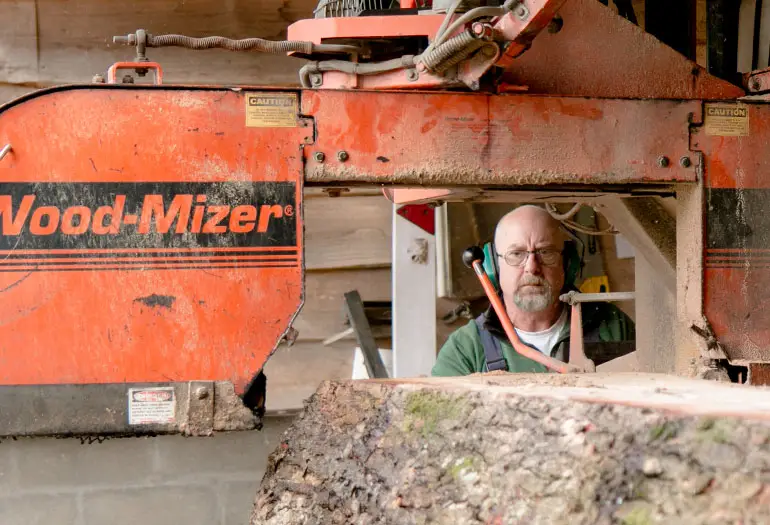
How they started building modules out of logs - ModuLog boxes
While thinking about how to profitably exploit the natural beauty of the wooded area, they decided to set up cottages along the forest trails and rent them out.
"I wanted something that would blend in with the forest" Leigh recalls. "And we wanted to reclaim the 'waste' materials from our ribbon saw." Instead of buying cabins, they thought of designing "glamping" (glamping + camping) cottages for those who want to camp with a bit more amenities than usual.
With the help of an architect, they designed their own glamping cottages, making them durable and versatile for a variety of uses: garden offices, summer homes, creative studios, fishing lodges and more. That's how their new business - ModuLog - got started.
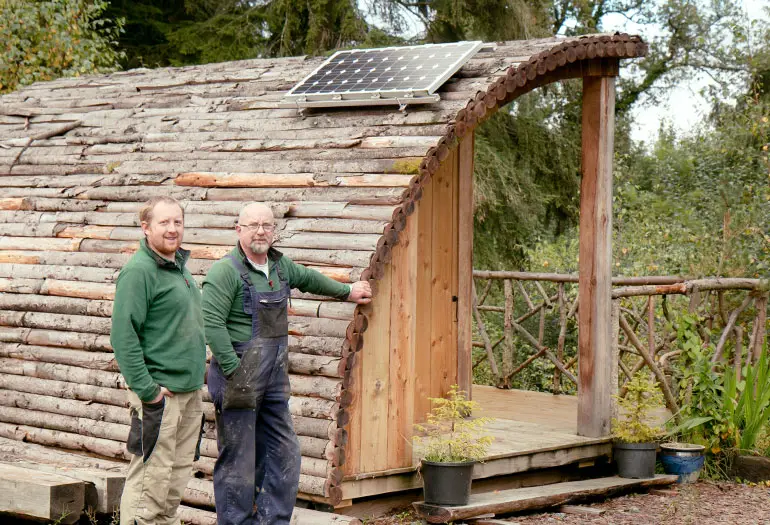
ModuLog boxes equipped with everything you need
"They're built to last 20-30 years without doing anything else to them"Leigh explains. "Everything is built to building regulation standards. So you get a solid structure that's built to last and can be used in all weather conditions."
Wooden boxes are modular - they can be combined in many ways. The exterior and interior can be easily customised, although the basic structure remains the same. The interior furniture converts into beds and has storage space inside. The kitchenette allows food to be prepared indoors and is mobile, for cooking outside in nice weather. The cottages can be connected to the electricity grid or can be ready equipped with a solar kit that provides enough electricity for a TV, computer and basic electricity needs.
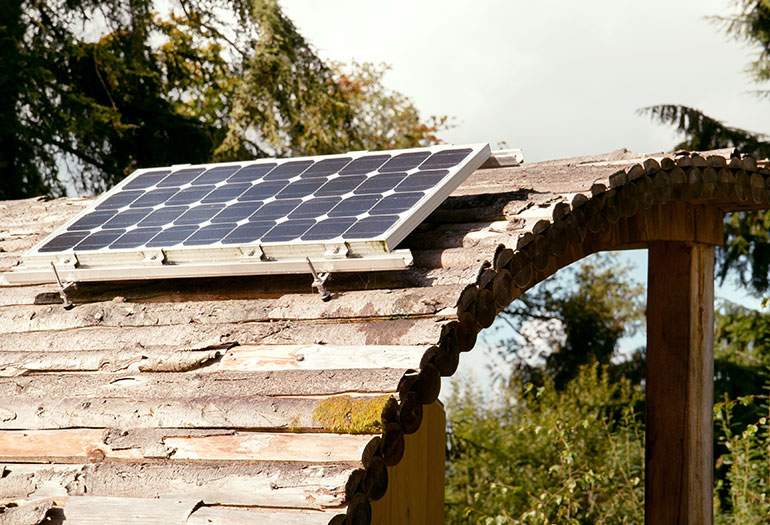
Locally sourced sheep's wool insulation in the ceilings, floor and walls keeps the cottages warm in winter and reflective roof insulation helps keep them cool in summer. The mesh that completely covers them on the outside keeps insects and pests away.
"The wood we use is the wood we had in our own forest"says Leigh. All exterior wood elements are machined from trees grown on their property or sourced locally - oak doors, window casings, western red cedar siding and Douglas fir - cut and machined in the shop.
"For the outside, we wanted it to look like a pile of logs, so we use logs from the first cut", explains Leigh. "We also have other roofing options - interlocking logs, planks with chamfered edges and artificial grass. We like the look of logs because moss and lichen will grow on them. People ask us how water doesn't get inside, but it's really just for looks, all the waterproofing elements are underneath."

Wood cutting for the construction of cottages
"We select only a few trees to cut down at a time." Leigh says. "We'll be installing log cabins and 'glamping' cabins on the woodland, so we want it to still look like a forest."
Once the trees are felled, they are then cut on a Wood-Mizer LT40 bandsaw into the exact size lumber needed to complete the project. The band saw is equipped with hydraulic log loading arms and features for easy positioning of heavy logs, so John can concentrate on cutting the planks and beams he needs.
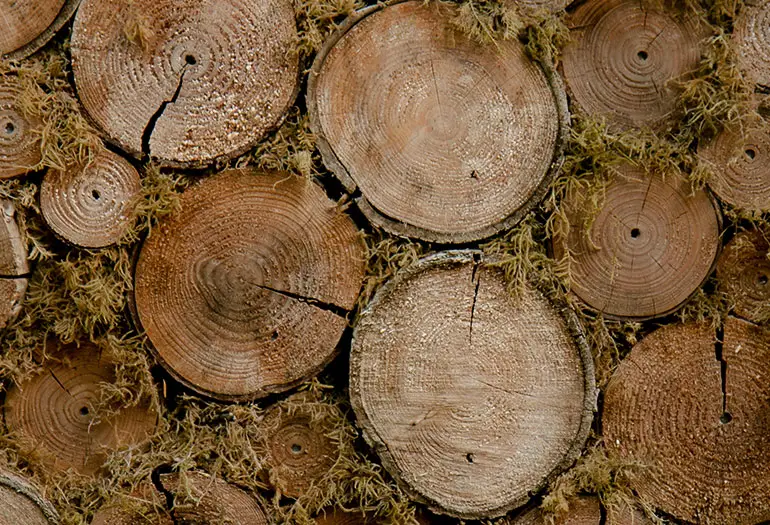
"As long as you know what you're doing, you can cut wood to any different sizes you want." Leigh says. "You make up your mind what you want, you get the log you want and you cut the lumber you want. Buying ready-made lumber is much more expensive than using your own wood. We save about 20% on outdoor lumber and 100% on the half logs we use for roofing because we cut them all ourselves."
Thanks to the bandsaw being on wheels, John and Leigh can take it with them to sawmill jobs for customers who have logs on site.
Personalised wooden boxes
People often ask what they can use modulog boxes for. Leigh's standard answer is - "You can use them for whatever you want! You can design them to suit your needs. They don't come ready-made, to universal size and design." Despite the variety of uses, all the requests for information seem to have one purpose - a close connection with nature. "With all the glass fitted, you can simply sit and watch nature outside." Leigh shares. "The last one I made was an office for a writer; he sits inside and writes all his books."
After receiving the initial request for a price quote, Leigh works to customize the proposed design, tailored to the client's needs, preferences and budget.
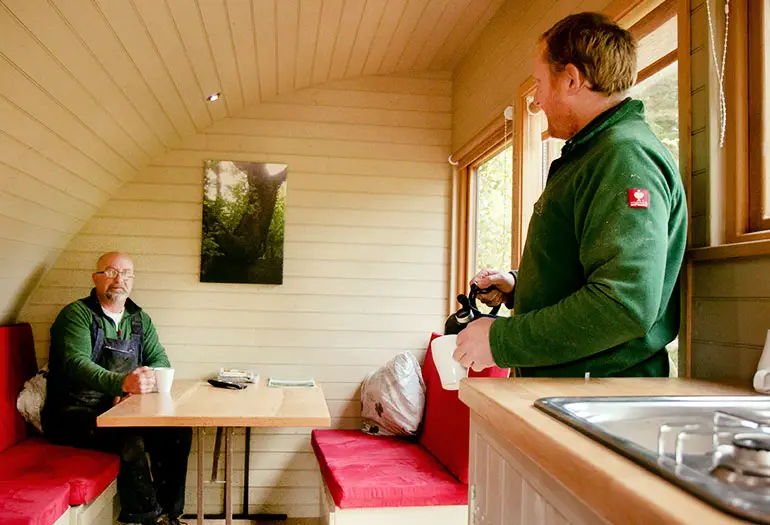
"Precisely because they are modular, we can plan however many sections (modules) will be needed and whether one wants to have large windows or small windows"says Leigh.
At the workshop, customers can visit the full-size moduLog houses, and at the planning stage, Leigh uses scale model versions of the houses to demonstrate the various possible configurations. It helps clients to practically see the layout in space and what the final project will look like.
Once the final design is built, it comes as a modular kit that can be transported in a flat pack. Typically, the finished modular cottages are built on site and smaller cottages can be delivered in final form on a trailer.

Forest management courses, from timber harvesting to timber construction
"Forest management is very important, especially for us, because we use a lot of wood. It doesn't cost much to plant trees and take care of them," Leigh says. "And you will benefit financially in the future."
John and Leigh offer three courses that cover the entire process of woodland management, logging and woodworking, and building structures using wood.
"People come here and learn from planting to cutting and everything that goes into wood production, then what you can use that wood for." Leigh says. "It was my father's idea to share his experience and knowledge with others, and for them to pass it on. Schools bring kids here, so we have a place where kids can come and learn about trees and their planting, growing, felling and processing at the ribbon saw and see the finished project done in the woodworking shop," says Leigh. "It's all about transferring knowledge and experience to future generations."
Author: Jacob Mooney



















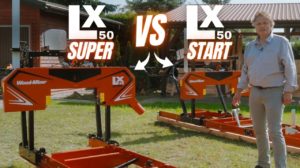
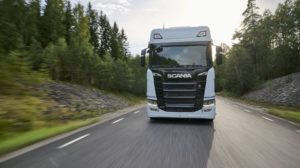
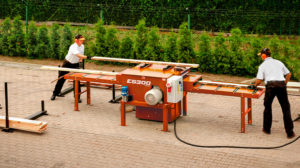
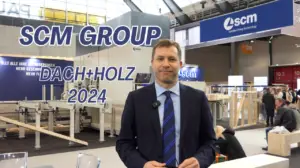
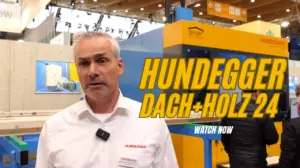
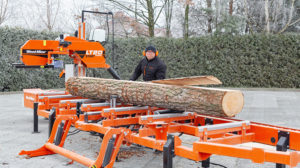
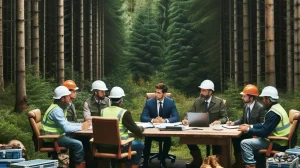
Add comment